Halloysite in Different Ceramic Products: A Review
Abstract
:1. Introduction
2. Methodology
3. Halloysite
4. Summarizing Papers and Discussion
4.1. Traditional Ceramics
Overview and Discussion
- The effect of halloysite-clay raw material composition and halloysite content in the formation and firing processing.
- The effect of halloysite type and structural characteristics on formation and firing processing.
4.2. Advanced Ceramics
Overview and Discussion
4.3. Ceramic Composites
Overview and Discussion
5. Scientific Interest, Trends and Perspectives
6. Conclusions
Author Contributions
Funding
Institutional Review Board Statement
Data Availability Statement
Conflicts of Interest
References
- MacKenzie, K.J.D.; Barneveld, D.V. Carbothermal synthesis of -sialon from mechanochemically activated precursors. J. Eur. Ceram. Soc. 2006, 26, 209–215. [Google Scholar] [CrossRef]
- Lampropoulou, P.; Katagas, C. Effects of zirconium silicate and chromite addition on the microstructure and bulk density of magnesia-magnesium aluminate spinel-based refractory materials. Ceram. Int. 2008, 34, 1247–1252. [Google Scholar] [CrossRef]
- Guo, J.; Chen, X.; Zhang, Y. Improving the Mechanical and Electrical Properties of Ceramizable Silicone Rubber/Halloysite Composites and Their Ceramic Residues by Incorporation of Different Borates. Polymers 2018, 10, 388. [Google Scholar] [CrossRef] [Green Version]
- Halloysite Market Size, Share & Trends Analysis Report by Application, (Medical, Ceramics, Cosmetics, Paints, Cement, Polymers), by Region (APAC, Europe, North America, CSA, MEA), and Segment Forecasts, 2018–2025. Available online: https://www.researchandmarkets.com/reports/4621729/halloysite-market-size-share-and-trends-analysis (accessed on 20 August 2021).
- Christogerou, A.; Lampropoulou, P.; Panagiotopoulos, E. Increase of frost resistance capacity of clay roofing tiles with boron waste addition. Constr. Build Mater. 2021, 280, 122493. [Google Scholar] [CrossRef]
- Burst, J.F. The application of clay minerals in ceramics. Appl. Clay Sci. 1990, 5, 421–443. [Google Scholar] [CrossRef]
- Ekosse, G. Provenance of the Kgwakgwe kaolin deposit in Southeastern Botswana and its possible utilization. Appl. Clay Sci. 2001, 20, 137–152. [Google Scholar] [CrossRef]
- Wilson, I.; Keeling, J. Global occurrence, geology and characteristics of tubular halloysite deposits. Clay Miner. 2018, 51, 309–324. [Google Scholar] [CrossRef]
- Kayaci, K. The use of perlite as flux in the production of porcelain stoneware tiles. Bol. Soc. Esp. Ceram. Vidr. 2020, 212, 1–8. [Google Scholar]
- Yuan, P.; Tan, D.; Annabi-Bergay, F. Properties and applications of halloysite nanotubes: Recent research advances and future prospects. Appl. Clay Sci. 2015, 112–113, 75–93. [Google Scholar] [CrossRef]
- Papoulis, D.; Komarneni, S.; Nikolopoulou, A.; Tsolis-Katagas, P.; Panagiotaras, D.; Kacandes, H.G.; Zhang, P.; Yin, S.; Sato, T.; Katsuki, H. Palygorskite-and Halloysite-TiO2 nanocomposites: Synthesis and photocatalytic activity. Appl. Clay Sci. 2010, 50, 118–124. [Google Scholar] [CrossRef]
- Asgar, H.; Jin, J.; Miller, J.; Kuzmenko, I.; Gadikota, G. Contrasting thermally-induced structural and microstructural evolution of alumino-silicates with tubular and planar arrangements: Case study of halloysite and kaolinite. Colloids Surf. A Physicochem. Eng. Asp. 2021, 613, 126106. [Google Scholar] [CrossRef]
- Bordeepong, S.; Bhongsuwan, D.; Pungrassami, T.; Bhongsuwan, T. Characterization of halloysite from Thung Yai District, Nakhon Si Thammarat Province, in Southern Thailand. Songklanakarin J. Sci. Technol. 2011, 33, 599–607. [Google Scholar]
- Benbow, J. New Zealand’s minerals for domestic consumption. Ind. Min. Mater. 1990, 273, 19–35. [Google Scholar]
- Rawtani, D.; Agrawal, Y.K. Multifarious applications of halloysite nanotubes: A review. Rev. Adv. Mater. Sci. 2012, 30, 282–295. [Google Scholar]
- Wilson, I. RKaolin and halloysite deposits of China. Clay Miner. 2004, 39, 1–15. [Google Scholar] [CrossRef]
- Benea, M.; Gorea, M. Mineralogy and technological properties of some kaolin types used in the ceramic industry. Studia Universitatis Babes-Bolyai. Geologia 2005, 33, 37. [Google Scholar]
- Joussein, E.; Petit, S.; Churchman, J.; Theng, B.; Righi, D.; Delvaux, B. Halloysite clay minerals a review. Clay Sci. 2005, 40, 383–426. [Google Scholar] [CrossRef]
- Abdullayev, E.; Lvov, Y. Halloysite clay nanotubes as a ceramic “skeleton” for functional biopolymer composites with sustained drug release. J. Mater. Chem. B 2013, 1, 2894–2903. [Google Scholar] [CrossRef]
- Muhammad, J.S.; Hafiz, M.A. Escalating applications of halloysite nanotubes. J. Chil. Chem. Soc. 2015, 60, 2949–2953. [Google Scholar]
- Zhang, A.; Mu, B.; Luo, Z.; Wang, A. Bright blue halloysite/CoAl2O4 hybrid pigments: Preparation, characterization and application in water-based painting. Dyes Pigm. 2017, 139, 473–481. [Google Scholar] [CrossRef]
- Naumenko, E.; Fakhrullin, R. Halloysite Nanoclay/Biopolymers Composite Materials in Tissue Engineering. Biotechnol. J. 2019, 14, 1–11. [Google Scholar] [CrossRef]
- Papoulis, D. Halloysite based nanocomposites and photocatalysis: A Review. Appl. Clay Sci. 2019, 168, 164–174. [Google Scholar] [CrossRef]
- Massaro, M.; Lazzara, G.; Noto, R.; Riela, S. Halloysite nanotubes: A green resource for materials and life sciences. Rend. Lincei Sci. Fis. Nat. 2020, 31, 213–221. [Google Scholar] [CrossRef]
- Lazaratou, C.V.; Vayenas, D.V.; Papoulis, D. The role of clays, clay minerals and clay-based materials for nitrate removal from water systems: A review. Appl. Clay Sci. 2020, 185, 105377. [Google Scholar] [CrossRef]
- Garside, M. Average Price of Kaolin in the U.S. from 2007 to 2020. Available online: https://www.statista.com/statistics/248194/average-price-of-kaolin/ (accessed on 20 August 2021).
- Halloysite Clay Nanotubes. Available online: https://phantomplastics.com/functional-fillers/halloysite/ (accessed on 22 August 2021).
- Gualtieri, A.; Bertolani, M. Mullite and cristobalite formation in fired products starting from halloysitic clay. Appl. Clay Sci. 1992, 7, 251–262. [Google Scholar] [CrossRef]
- Shelest, A.P. Peculiarities of Troshkovsk clays as raw material for refractory production. Ogneupory 1992, 3, 24–28. [Google Scholar]
- Shelest, A.P. Refractories of Troshkovsk clays for lining steel pouring ladle. Ogneupory 1992, 4, 17–19. [Google Scholar]
- Sumi, K.; Kobayashi, Y.; Kato, E. Preparation of dense cordierite ceramics fron ultrafine particles of magnesium hydroxide and kaolin. J. Ceram. Soc. JAPAN 1998, 106, 693–697. [Google Scholar] [CrossRef] [Green Version]
- Elueze, A.A.; Ekengele, N.L.; Bolarinwa, A.T. Industrial assessment of the residual clay bodies over gneisses and schists of Yaounde area, south Cameroon. J. Min. Geol. Sci. 2004, 40, 9–15. [Google Scholar]
- Imai, T.; Naitoh, Y.; Yamamoto, T.; Ohyanagi, M. Translucent Nano Mullite Based Composite Ceramic Fabricated by Spark Plasma Sintering. J. Ceram. Soc. JAPAN 2006, 114, 138–140. [Google Scholar] [CrossRef] [Green Version]
- Tezuka, N.; Lowa, I.M.; Davies, I.J.; Prior, M.; Studer, A. In situ neutron diffraction investigation on the phase transformation sequence of kaolinite and halloysite to mullite. Phys. B 2006, 385–386, 555–557. [Google Scholar] [CrossRef]
- Septawendar, R.; Suhanda, N.; Wahyudi, K. Sifat Fisik Lempung Tanjung Morawa Dalam Transformasi Fasa Mineral Berdasarkan Investigasi Difraksi Sinar X. J. Ris. Geol. Pertamb. Jilid 2007, 17, 11–19. [Google Scholar] [CrossRef] [Green Version]
- Pialy, P.; Nkoumbou, C.; Villiéras, F.; Razafitianamaharavo, A.; Barres, O.; Pelletier, M.; Ollivier, G.; Bihannic, I.; Njopwouo, D.; Yvon, J.; et al. Characterization for industrial applications of clays from Lembo deposit, Mount Bana (Cameroon). Clay Miner. 2008, 43, 415–435. [Google Scholar] [CrossRef]
- Dondi, M.; Iglesias, C.; Dominguez, E.; Guarini, G.; Raimondo, M. The effect of kaolin properties on their behaviour in ceramic processing as illustrated by a range of kaolins from the Santa Cruz and Chubut Provinces, Patagonia (Argentina). Appl. Clay Sci. 2008, 40, 143–158. [Google Scholar] [CrossRef] [Green Version]
- Djambazov, S.; Malinov, O.; Yoleva, A. White halloysitic clay from the east Rhodopian Paleogene depression at Kralevo village, Haskovo district, Bulgaria/a potential raw material for the ceramic industry. Interceram 2009, 58, 210–221. [Google Scholar]
- Tezuka, N.; Low, I.M.; Davies, I.J.; Alecu, I.D.; Stead, R.J.; Mehrtens, E.G.; Latella, B.A. Effect of Fluoride and Oxide Additives on the Phase Transformations in Alumina/Clay Ceramics. J. Aust. Ceram. Soc. 2009, 45, 19–27. [Google Scholar]
- O’Connor, S.J.; MacKenzie, K.J.D. Synthesis, characterisation and thermal behaviour of lithium aluminosilicate inorganic polymers. J. Mater. Sci. 2010, 45, 3707–3713. [Google Scholar] [CrossRef]
- Amrane, B.; Ouedraogo, E.; Mamen, B.; Djaknoun, S.; Mesrati, N. Experimental study of the thermo-mechanical behaviour of alumina-silicate refractory materials based on a mixture of Algerian kaolinitic clays. Ceram. Int. 2011, 37, 3217–3227. [Google Scholar] [CrossRef]
- Bordeepong, S.; Bhongsuwan, D.; Pungrassami, T.; Bhongsuwan, T. Mineralogy, Chemical Composition and Ceramic Properties of Clay Deposits in Southern Thailand. Kasetsart J. 2012, 46, 485–500. [Google Scholar]
- Moussi, B.; Medhioub, M.; Hatira, N.; Yans, J.; Hajjaji, W.; Rocha, F.; Labrincha, J.A.; Jamoussi, F. Identification and use of white clayey deposits from the area of Tamra (northern Tunisia) as ceramic raw materials. Clay Miner. 2011, 46910, 165–175. [Google Scholar] [CrossRef]
- Harabi, A.; Zenikheri, F.; Boudaira, B.; Bouzerara, F.; Guechi, A.; Foughalia, L. A new and economic approach to fabricate resistant porous membrane supports using kaolin and CaCO3. J. Eur. Ceram. Soc. 2014, 34, 329–1340. [Google Scholar] [CrossRef]
- Gass, S.E.; Sandoval, M.L.; Taloua, M.H.; Tomba, A.G. High temperature mechanical behavior of porous cordierite-based ceramic materials evaluated using 3-point bending. Procedia Manuf. 2015, 9, 254–261. [Google Scholar] [CrossRef] [Green Version]
- Jemaï, M.B.M.; Sdiri, A.; Errais, E.; Duplay, J.; Saleh, I.B.; Zagrarni, M.F.; Bouaziz, S. Characterization of the Ain Khemouda halloysite (western Tunisia) for ceramic industry. J. Afr. Earth Sci. 2015, 111, 194–201. [Google Scholar] [CrossRef]
- Senoussi, H.; Osmani, H.; Courtois, C.; el Hadi Bourahli, M. Mineralogical and chemical characterizationof DD3 kaolin from the east of Algeria. Bol. Soc. Esp. Ceram. Vidr. 2016, 55, 121–126. [Google Scholar] [CrossRef] [Green Version]
- Zaiou, S.; Harabi, A.; Harabi, E.; Guechi, A.; Karboua, N.; Benhassine, M.-T.; Zouai, S.; Guerfa, F. Sintering of anorthite based ceramics prepared from kaolin DD2 and calcite. Ceramica 2016, 62, 317–322. [Google Scholar] [CrossRef]
- El-Kammar, A.; Abu-Zied, H.T.; Galal, M.; Osman, D. Composition, radioactivity, and possible applications of kaolin deposits of Sinai, Egypt. Arab. J. Geosci. 2017, 10, 1–19. [Google Scholar] [CrossRef]
- Raghdi, A.; Heraiz, M.; Sahnoune, F.; Saheb, N. Mullite-zirconia composites prepared from halloysite reaction sintered with boehmite and zirconia. Appl. Clay Sci. 2017, 146, 70–80. [Google Scholar] [CrossRef]
- Bouzidi, N.; Bouzidi, A.; Nunes, R.O.; Merabet, D. Study of the microstructure and mechanical properties of halloysite–kaolinite/BaCO3 ceramic composites. Clay Miner. 2018, 53, 403–412. [Google Scholar] [CrossRef]
- El Haddar, A.; Gharibi, E.; Azdimousa, A.; Fagel, N. Characterization of halloysite (North East Rif, Morocco): Evaluation of its suitability for the ceramics industry. Clay Miner. 2018, 53, 65–78. [Google Scholar] [CrossRef]
- Sanz, A.; Bastida, J.; Cab, A. X-ray diffraction Warren–Averbach mullite analysis in whiteware porcelains: Influence of kaolin raw material. Clay Miner. 2018, 53, 471–485. [Google Scholar] [CrossRef]
- El Haddar, A.; Manni, A.; Azdimousa, A.; El Hassani, I.E.E.A.; Bellil, A.; Sadik, C.; Fagel, N.; Ouahabi, M.E. Elaboration of a high mechanical performance refractory from halloysite and recycled alumina. Bol. Soc. Esp. Ceram. Vidr. 2019, 59, 95–120. [Google Scholar] [CrossRef]
- Kim, J.Y.; Hwang, K.T. Properties of Kaolinite as a Raw Material for Porcelain. J. Korean Ceram. Soc. 2019, 56, 566–576. [Google Scholar] [CrossRef] [Green Version]
- Lao, X.; Xua, X.; Jiang, W.; Liang, J.; Liu, J. Effect of excess MgO on microstructure and thermal properties of cordierite ceramics for high-temperature thermal storage. Ceram. Int. 2019, 45, 22264–22272. [Google Scholar] [CrossRef]
- Serragdj, I.; Harabi, A.; Kasrani, S.; Foughali, L.; Karboua, N. Effect of ZrO2 additions on densification and mechanical properties of modified resistant porcelains using economic raw materials. J. Aust. Ceram. Soc. 2019, 55, 489–499. [Google Scholar] [CrossRef]
- Cheraitia, A.; Redjimi, Z.; Bououdina, M. Novel mullite-cordierite ceramic refractory fabricated from halloysite and talc. Int. J. Appl. Ceram. Technol. 2021, 18, 70–80. [Google Scholar] [CrossRef]
- Churchman, G.J.; Whitton, J.S.; Claridge, G.G.C.; Theng, B.K.G. Intercalation method using formamide for differentiating halloysite from kaolinite. Clays Clay Miner. 1984, 32, 241–248. [Google Scholar] [CrossRef]
- Cunningham, M.; Lowe, D.; Wyatt, J.; Moon, V.; Jock Churchman, G. Discovery of halloysite books in altered silicic Quaternary tephras, northern New Zealand. Clay Miner. 2016, 51, 351–372. [Google Scholar] [CrossRef]
- Spínola, D.C.S.; De Miranda, A.; Macedo, D.A.; Paskocimas, C.A.; Nascimento, R.M. Preparation of glass-ceramic materials using kaolin and oil well drilling wastes. J. Mater. Res. Technol. 2019, 9, 3459–3465. [Google Scholar] [CrossRef]
- Zhang, C.; Komeya, K.; Tatami, J.; Meguro, T.; Cheng, Y.-B. Synthesis of Mg-a SiAlON powders from talc and halloysite clay minerals. J. Eur. Ceram. Soc. 2000, 20, 1809–1814. [Google Scholar] [CrossRef]
- Lee, J.G.; Casarini, R.; Cutler, I.B. Sialon derived from clay to provide an economical refractory material. J. Heat Technol. Ind. Heat. 1976, 43, 50–53. [Google Scholar]
- Mackenzie, K.J.D.; Meinhold, R.H.; White, G.V.; Sheppard, C.M. Carbothermal formation of p’-sialon from kaolinite and halloysite studied by 29Si and 27AI solid state MAS N M R. J. Mater. Sci. 1994, 29, 2611–2619. [Google Scholar] [CrossRef]
- Neal, G.S.; Smith, M.E.; Trigg, M.B.; Drennan, J. Solid-state NMR examination of the formation of β-sialon by carbothermal reduction and nitridation of halloysite clay. J. Mater. Chem. 1994, 4, 245–251. [Google Scholar] [CrossRef]
- MacKenzie, K.J.D.; Ekstrom, T.C.; White, G.; Hartman, V.J.S. Carbothermal synthesis of low-z b¾-sialon from silica or elemental silicon in the presence and absence of Y2O3: An XRD and MAS NMR perspective. J. Mater. Chem. 1997, 7, 1057–1061. [Google Scholar] [CrossRef]
- Ekström, T.; Shen, Z.-J.; Mackenzie, K.J.D.; Brown, I.W.M.; White, G.V. α-Sialon ceramics synthesised from a clay precursor by carbothermal reduction and nitridation. J. Mater. Chem. 1998, 8, 977–983. [Google Scholar] [CrossRef]
- Sheppard, C.M.; MacKenzie, K.J.D. Silicothermal Synthesis and Densification of X-sialon in the Presence of Metal Oxide Additives. J. Eur. Ceram. Soc. 1999, 19, 535–541. [Google Scholar] [CrossRef]
- Qiu, J.Y.; Tatami, J.; Zhang, C.; Komeya, K.; Meguro, T.; Cheng, Y.B. Influence of starting material composition and carbon content on the preparation of Mg-a SiAlON powders by carbothermal reduction-nitridation. J. Eur. Ceram. Soc. 2002, 22, 2989–2996. [Google Scholar] [CrossRef]
- Yin, L.; Jones, M.I. Synthesis and characterization of β-Sialon powders from Si, halloysite clay and AlN powders. Int. J. Mod. Phys. B 2017, 31, 16–19. [Google Scholar] [CrossRef]
- Mostaghaci, H.; Riley, F.L. The Milling and Densification Behaviour of -Sialon Powders Prepared from Alumino-Silicate Minerals. Int. J. Appl. Ceram. Technol. 1988, 4, 51–71. [Google Scholar] [CrossRef]
- Bandyopadhyay, S.; Mukerji, J. The Effect of Nitrogen Content on the Sintering Behaviour and Properties of Sialon Prepared from Kaolin. Ceram. Int. 1993, 19, 133–139. [Google Scholar] [CrossRef]
- Brown, I.W.M. Non-Oxide Ceramics from New Zealand. In Proceedings of International Ceramic Conference Proc. Austceram 92; Bannister, J., Ed.; CSIRO: Melbourne, VIC, Australia, 1992; pp. 494–503. [Google Scholar]
- Mazzoni, A.D.; Aglietti, E.F.; Pereira, E. β’-sialon preparation from kaolinitic clays. Appl. Clay Sci. 1993, 7, 407–420. [Google Scholar] [CrossRef]
- Narciso, F.J.; Rodríguez-Reinoso, F. Synthesis of β-SiAlON from clays: Effect of starting materials. J. Mater. Chem. 1994, 4, 1137. [Google Scholar] [CrossRef]
- Fu, Y.-B.; Zhang, L.-D.; Zheng, J.-Y. Electroless deposition of Ni on template of halloysite and its magnetic property. Trans. Nonferrous Met. Soc. China 2004, 14, 152–156. [Google Scholar]
- Fu, Y.; Zhang, L. Simultaneous deposition of Ni nanoparticles and wires on a tubular halloysite template: A novel metallized ceramic microstructure. J. Solid State Chem. 2005, 178, 3595–3600. [Google Scholar] [CrossRef]
- Byrne, R.S.; Deasy, P.B. Use of porous aluminosilicate pellets for drug. Delivery. J. Microencapsul. 2005, 22, 423–437. [Google Scholar] [CrossRef] [PubMed]
- Forsgren, J.; Jämstorp, E.; Bredenberg, S.; Engqvist, H.; Strømme, M. A ceramic drug delivery vehicle for oral administration of highly potent opioids. J. Pharm. Sci. 2010, 99, 219–226. [Google Scholar] [CrossRef]
- Fakhrullin, R.F.; Tursunbayeva, A.; Portnov, V.S.; L’vovd, Y.M. Ceramic Nanotubes for Polymer Composites with Stable Anticorrosion Properties. Crystallogr. Rep. 2014, 59, 1107–1113. [Google Scholar] [CrossRef]
- Vinokurov, V.A.; Kopitsyn, D.S.; Kotelev, M.S.; Ivanov, E.V.; Lvov, Y.M.; Novikov, A.A. Natural Ceramic Nanotube Substrates for Surface-Enhanced Raman Spectroscopy. TMS 2015, 67, 2877–2879. [Google Scholar] [CrossRef]
- Chen, Z.; Zeng, J.; Lv, D.; Gao, J.; Zhang, J.; Bai, S.; Li, R.; Hong, M.; Wu, J. Halloysite nanotube-based electrospun ceramic nanofibre mat: A novel support for zeolite membranes. R. Soc. Open Sci. 2016, 3, 160552. [Google Scholar] [CrossRef] [PubMed] [Green Version]
- Kujawa, M.; Dobrzański, L.A.; Matula, G.; Kremzer, M.; Tomiczek, B. Manufacturing of porous ceramic preforms based on halloysite nanotubes (HNTS). Arch. Metall. Mater. 2016, 61, 917–922. [Google Scholar] [CrossRef] [Green Version]
- Pawlyta, M.; Tomiczek, B.; Dobrzański, L.A.; Kujawa, M.; Bierska-Piech, B. Transmission electron microscopy observations on phase transformations during aluminium/mullite composites formation by gas pressure infiltration. Mater. Charact. 2016, 114, 9–17. [Google Scholar] [CrossRef]
- Ghaderi-Ghahfarrokhi, M.; Haddadi-Asl, V.; Shahrooz Zargarian, S. Fabrication and characterization of polymer-ceramic nanocomposites containing drug loaded modified halloysite nanotubes. J. Biomed. Mater. Res. 2017, 106, 1277–1287. [Google Scholar] [CrossRef]
- Vinokurov, V.A.; Stavitskaya, A.V.; Chudakov, Y.A.; Ivanov, E.V.; Shrestha, L.K.; Ariga, K.; Darrat, Y.A.; Lvov, Y.M. Formation of metal clusters in halloysite clay nanotubes. Sci. Technol. Adv. Mater. 2017, 18, 147–151. [Google Scholar] [CrossRef] [PubMed]
- Zhang, J.; Yan, Y.; Hu, Z.; Fan, X.; Zheng, Y. Utilization of low-grade pyrite cinder for synthesis of microwave heating ceramics and their microwave deicing performance in dense-graded asphalt mixtures. J. Clean. Prod. 2018, 170, 486–495. [Google Scholar] [CrossRef]
- Mingo, B.; Guo, Y.; Nemcova, A.; Gholinia, A.; Mohedano, M.; Sun, M.; Matthews, A.; Yerokhin, A. Incorporation of halloysite nanotubes into forsterite surface layer during plasma electrolytic oxidation of AM50 Mg alloy. Electrochim. Acta 2019, 299, 772–788. [Google Scholar] [CrossRef] [Green Version]
- Molaei, A.; Lashgaroo, M.; Yousefpour, M. Effects of electrophoretic parameters on chitosan-based nanocomposite coatings. J. Aust. Ceram. Soc. 2019, 56, 1–10. [Google Scholar] [CrossRef]
- Petrova, D.A.; Filippov, A.N.; Kononenko, N.A.; Shkirskay, S.A.; Timchenko, M.O.; Ivanov, E.V.; Vinokurov, V.A.; Lvov, Y.M. Perfluorinated hybrid membranes modified by metal decorated clay nanotubes. J. Membr. Sci. 2019, 582, 172–181. [Google Scholar] [CrossRef]
- Johari, N.S.M.; Adnan, S.B.R.S.; Ahmad, N. Novel halloysite based nanoionic Na2ZnSiO4 solid electrolyte: Structural and electrical properties. Ceram. Int. 2020, 46, 20369–20375. [Google Scholar] [CrossRef]
- Mingo, B.; Guo, Y.; Leiva-Garcia, R.; Connolly, B.J.; Matthews, A.; Yerokhin, A. Smart Functionalization of Ceramic-Coated AZ31 Magnesium Alloy. Appl. Mater. Interfaces 2020, 12, 30833–30846. [Google Scholar] [CrossRef] [PubMed]
- Clarke, G. Tubular clays. Ind. Miner. 2008, 486, 58–59. [Google Scholar]
- Obada, D.O.; Dodoo-Arhin, D.; Dauda, M.; Anafi, F.O.; Ahmed, A.S.; Ajayi, O.A. The impact of kaolin dehydroxylation on the porosity and mechanical integrity of kaolin based ceramics using different pore formers. Results Phys. 2017, 7, 2718–2727. [Google Scholar] [CrossRef]
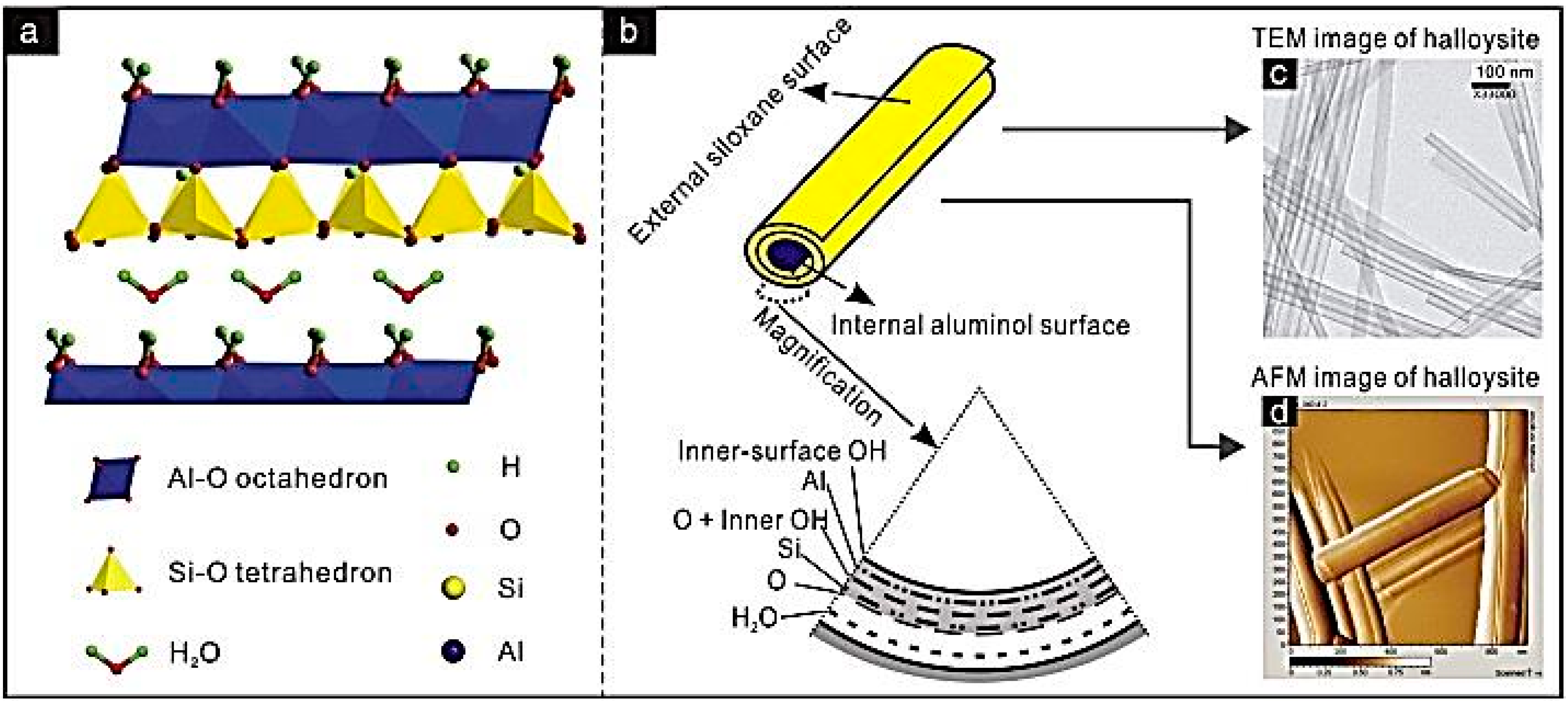
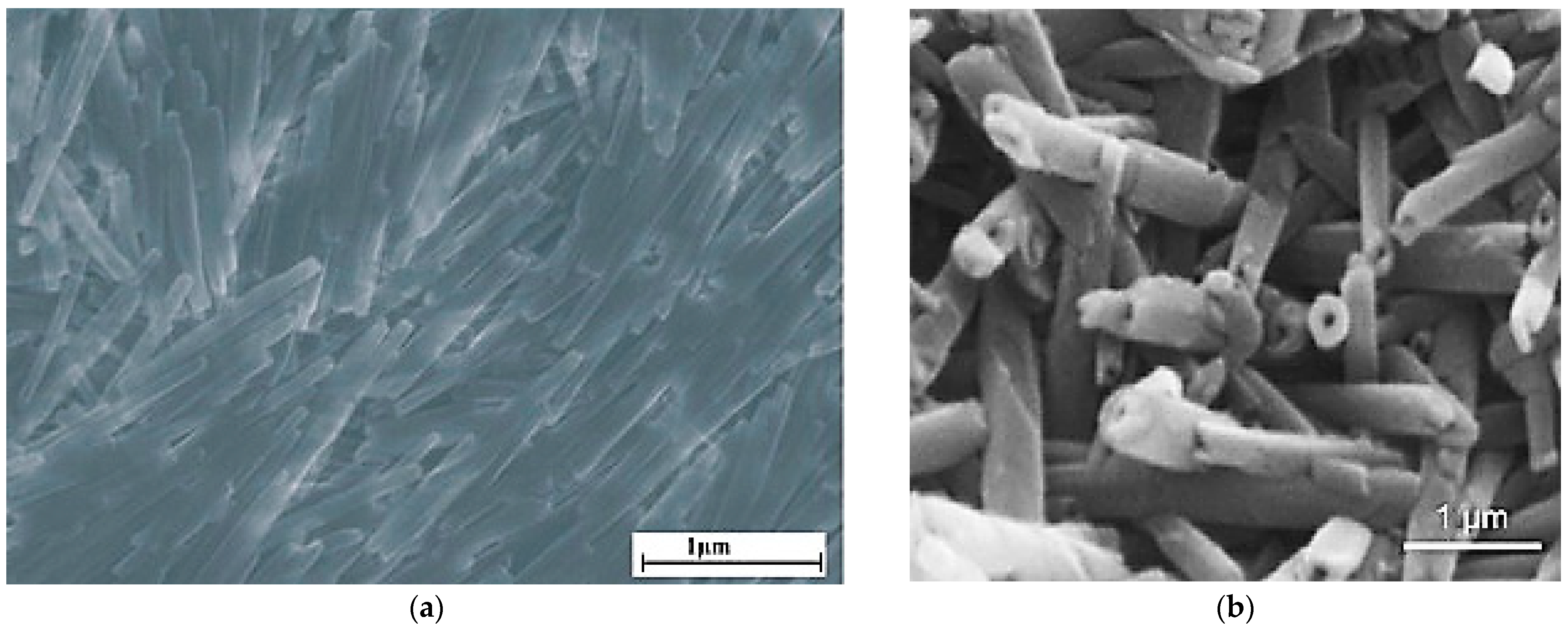
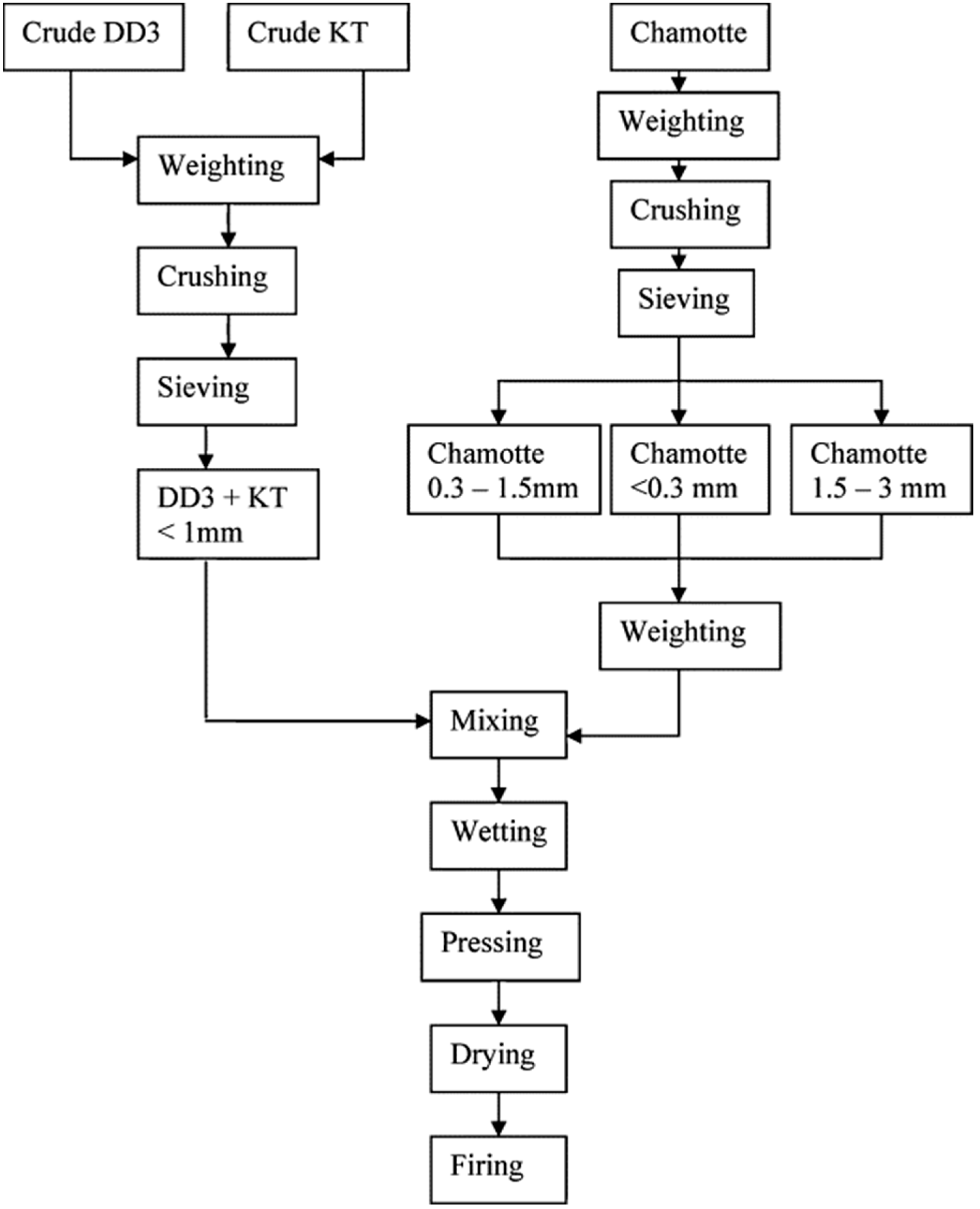
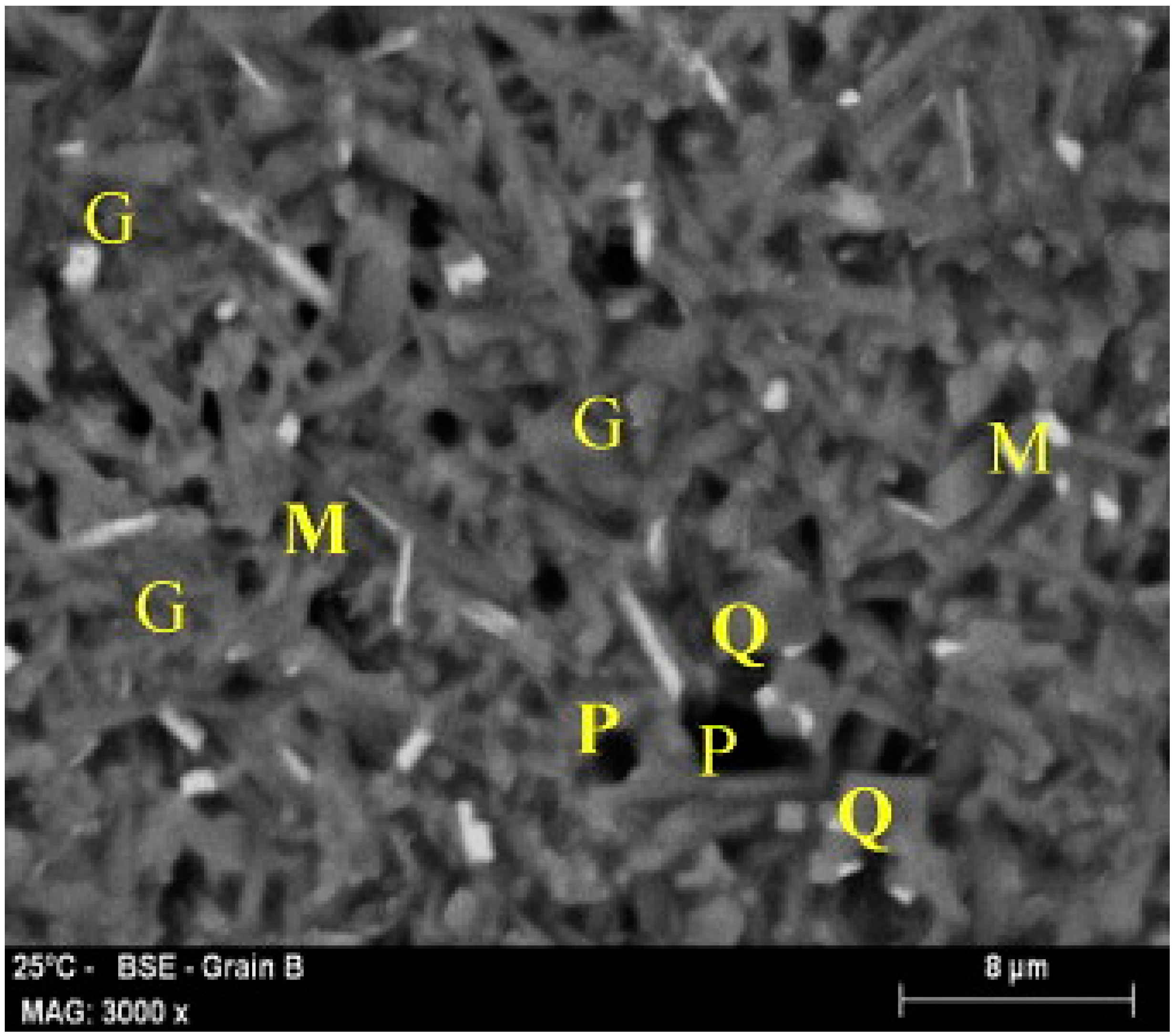
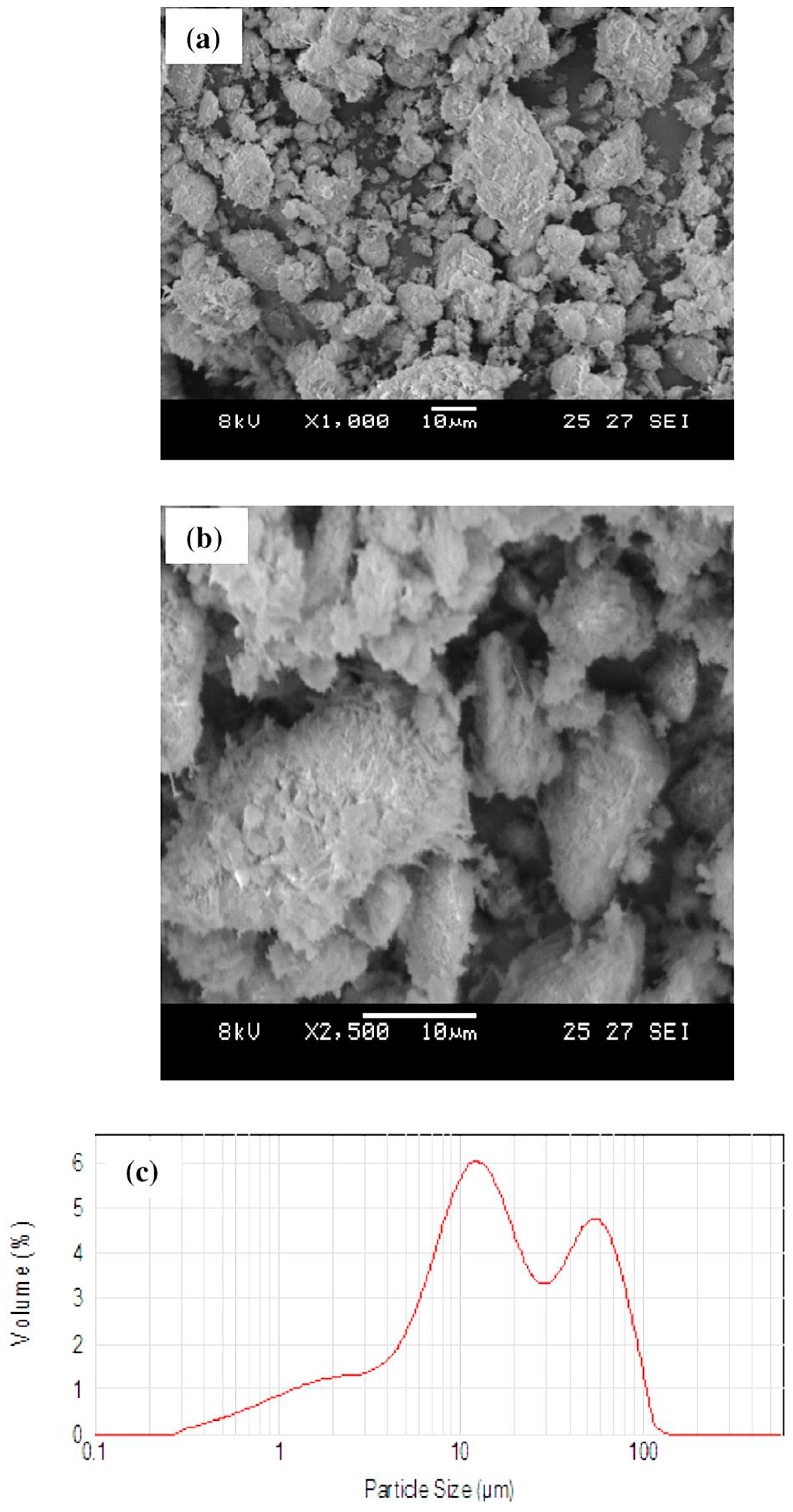

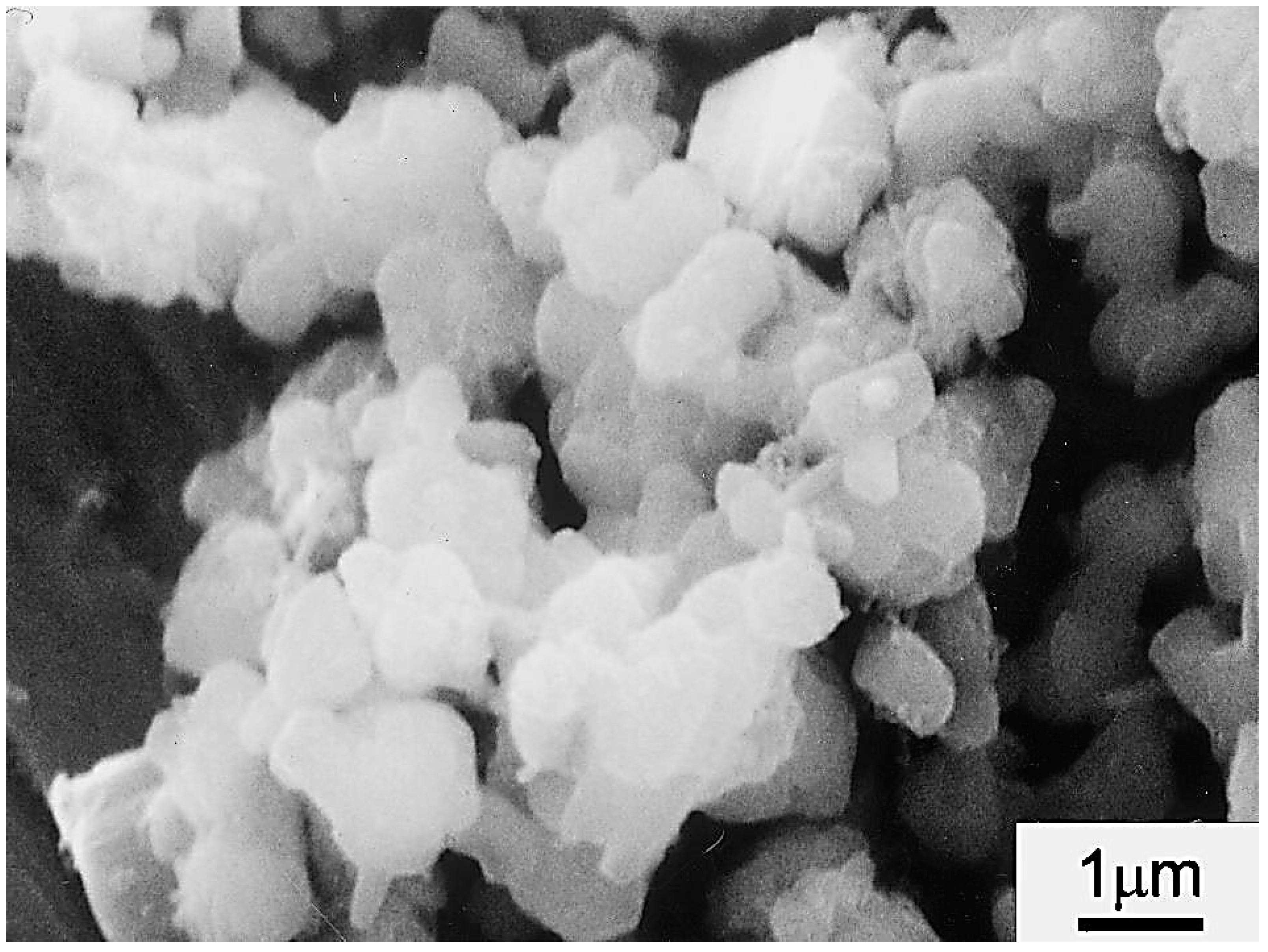


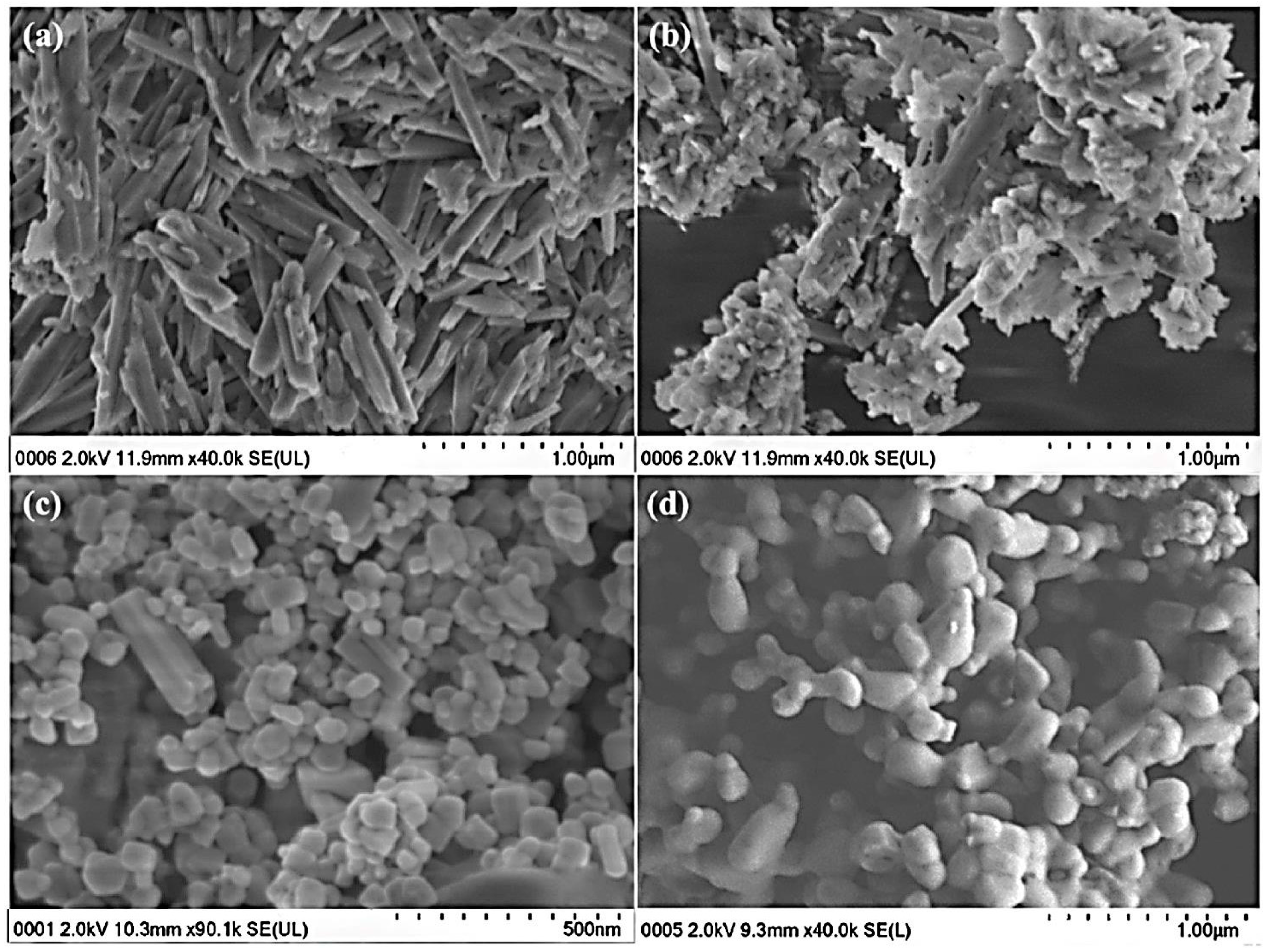
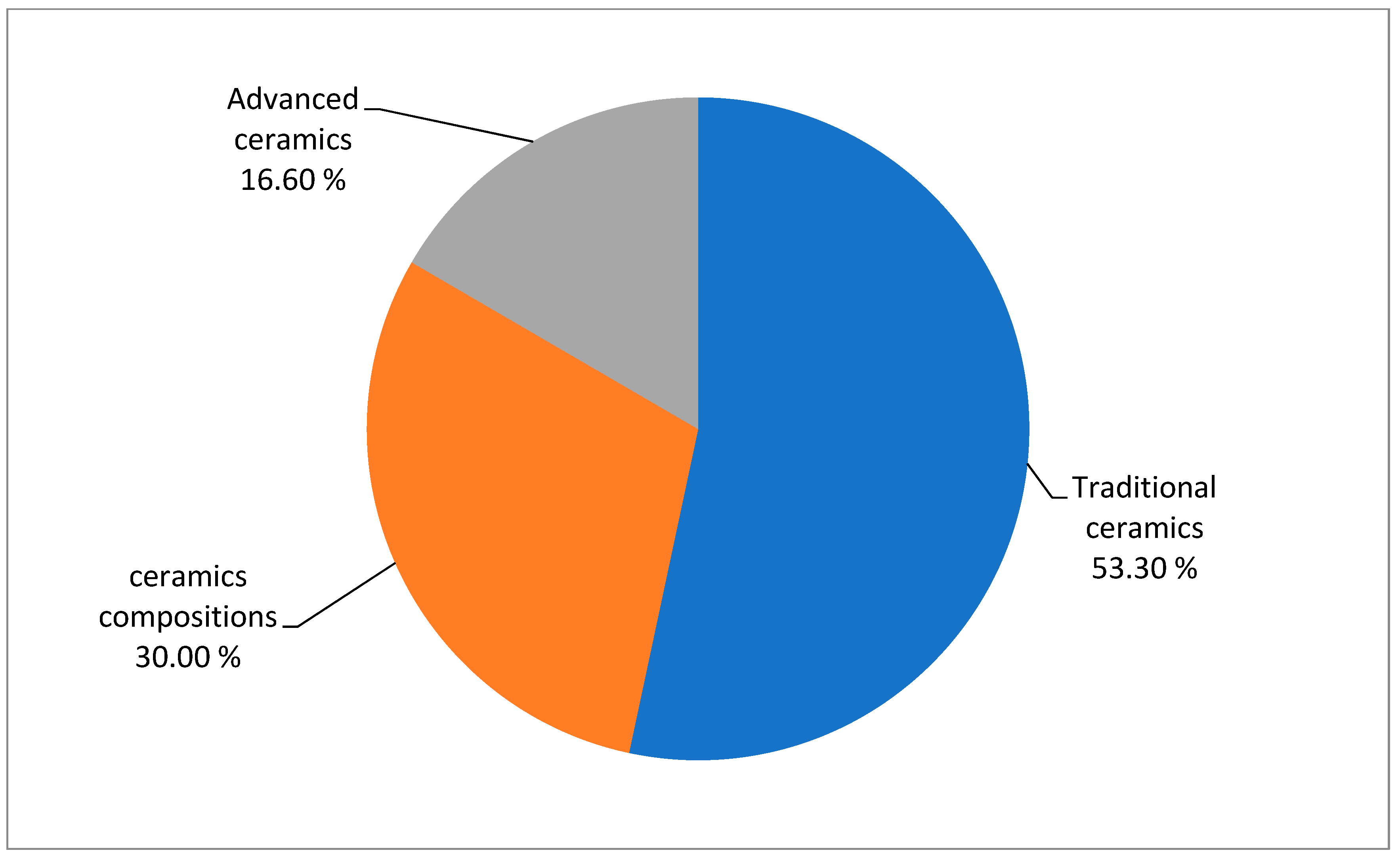
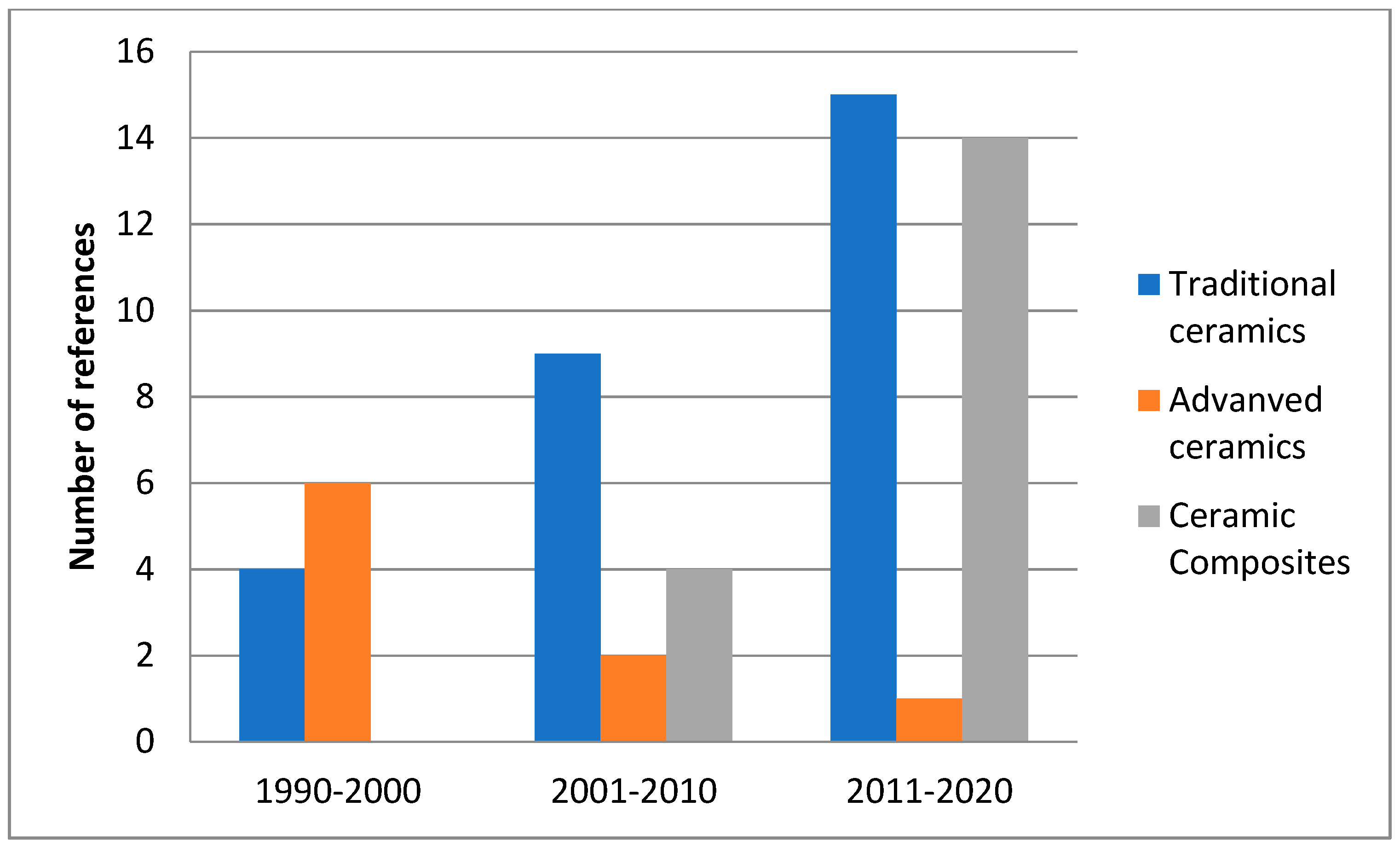
| Origin of Halloysite | Starting Raw Materials | Basic Mineral Composition of Clay Raw Material | Characteristics of Halloysite (Type, Morphology, Particle Size, Amount in Raw Material) | Synthesis/Processing | Potential Use/ Ceramic Product | Ref. |
|---|---|---|---|---|---|---|
| Central Italy | Halloysite-rich clay | Halloysite, siliceous amorphous, feldspars, limonite, biotite, chabazite | Halloysite 10 Å, 48–70 wt%, | Sintering/crushing and grounding of samples. Pressing at 300 N/mm2. Slow firing (2 °C/min), at 1200 °C and remaining for 10 h, slow cooling inside the industrial kiln in 10 h. Rapid firing at 1085 or 1120 °C in 41 min and 1195 °C in 60 min, rapid cooling inside the kiln. | Mullite-based ceramic | Gualtieri and Bertolani (1992) |
| Troshkovsk (Russia) | Kaolinite–halloysite clay | Halloysite, alumina kaolinite, montmorillonite | 10–40 wt% | Not provided | Refractory products | Shelest, (1992) |
| Not provided | Kaolinite-rich clay or halloysite-rich clay, magnesium hydroxide | Halloysite, accessories | Needle like halloysite, 0.5–1 μm in size | Sintering/mixtures of (i) kaolinite, synthesized magnesium hydroxide and (ii) halloysite, synthesized magnesium hydroxide sintered at 1350 °C at a rate of 100 °C/min in a reducing atmosphere | Cordierite Ceramics | Sumi et al. (1998) |
| Cameroon | Kaolinite–halloysite clay | Kaolinite, halloysite, illite, quartz, goethite, feldspar | Not provided | Not provided | Burnt bricks, ceramics, earthenware | Elueze et al. (2004) |
| Algeria | Halloysite-rich clay | Halloysite, accessories | Halloysite 10 and 7 Å | Spark plasma sintering/sintering at 1300 °C with a rate of 100 °C/min under pressure of 40 MPa in a reducing atmosphere | Nano-mullite-based ceramic | Imai et al. (2006) |
| New Zealand | Kaolinite-rich clay or halloysite-rich clay with or without alumina | Not provided | Not provided | Sintering/prepared starting mixtures pressed at 113 MPa by uniaxial pressing and at 120 MPa by cold isostating pressing. Heating at a maximum temperature of 1500 °C with a heating and cooling rate of 10 °C/min. | Mullite-based ceramic | Tezuka et al. (2006) |
| Indonesia | Halloysite-rich clay | Halloysite, feldspar, montmorillonite, mica, quartz | Not provided | Sintering/Halloysite-rich clay fired at 1100 and 1200 °C | Several traditional ceramic products and tiles | Septawendar et al. (2007) |
| Cameroon | Kaolinite–halloysite clay | Kaolinite, halloysite, quartz, feldspars, illite, carbonates, phosphates, iron hydroxides, anatase | Tubular halooysite 10 and 7 Å | Not provided | Conventional ceramics, earthen bricks | Pialy et al. (2008) |
| Patagonia | Halloysite-rich clay | Kaolinite–halloysite clay /kaolinite, halloysite, smectite, illite/smectite, quartz, feldspars | Tubular halloysite, | Not provided | Sanitary ware, porcelain, stoneware | Dondi et al. (2008) |
| Bulgaria | Halloysite-rich clay | Halloysite, sanidine | Not provided | Not provided | Tiles, bricks | Djambazov et al. (2009) |
| New Zealand | Kaolinite-rich clay or halloysite-rich clay, alumina, fluoride additives, oxide additives. | Halloysite, cristobalite, quartz | Not provided | Sintering/preparation mixtures of 50 wt% halloysite (or kaolinite), 50 wt% alumina, 1.5 or 3.0 wt% TiO2 additive or 2.5–5 wt% Fe2O3 additive. Pressing at 110–113 MPa by uniaxial pressing and at 120–200 MPa by cold isostating pressing. Heating at 1300–1600 °C with a heating rate of 1.5 °C/min. | Alumina/Clay ceramics | Tezuka et al. (2009) |
| New Zealand | Halloysite-rich clay, lithium hydroxide or lithium silicate | Halloysite, cristobalite, quartz | Not provided | Conventional method of geopolymer, solid state, thermal reactions, sintering/dehydroxylation of halloysite at 570 °C. Synthesis of lithium aluminosilicate precursors compounds: (i) after dehydroxylated halloysite with lithium hydroxide or lithium silicate at alkaline conditions or (ii) by solid state reaction of dehydroxylated halloysite with lithium hydroxide at 570 °C for 4 h or (iii) firing of dehydroxylated halloysite with lithium hydroxide, fine silica fune powder at 600 °C. Sintering of precursors up to 1275 °C. | Lithium aluminosilicate ceramics | Conor and MacKenzie (2010) |
| E. Algeria | Halloysite-rich clay, kaolinite-rich clay, chamotte | Halloysite, kaolinite, quartz, calcite, goetite, plagioclase | Not provided | Sintering/prepared mixtures of 30 wt% halloysite clay, 35 wt% kaolinite clay, 30 wt% chamotte. Pressing under 35 MPa and firing at 1350 °C for 33 h. | Refractory | Amrane et al. (2011) |
| N. Thailand | Kaolinite-rich clays, Kaolinite–halloysite clay, halloysite-rich clay, ball clay | Kaolinite, halloysite, illite, microcline, quartz, anatase, gibbsite | Hollow microtubules and plates of halloysite 7 Å, with dimensions 0.08–0.2 μm diameter and 0.50–4.5 μm length, 70 wt% | Sintering/prepared dry powders pressed under 5000 kg and firing from 880 to 1300 °C. | Ware ceramics, porous ceramics, inorganic polymer | Bordeepong et al. (2011), Bordeepong et al. (2012) |
| N. Tunisia | Kaolinite–halloysite clay, Clays with quartz-feldspar and low philosilicates | Halloysite, kaolinite | Halloysite7 Å < 2 μm, 59–61 wt% | Sintering/piles: prepared mixtures pressed at 250 bar and sintered at 800–950° (10 °C/min for 30 min). Bricks: prepared mixtures sintered at 950–1100° (15 °C/min for 30 min). | Bricks, tiles | Moussi et al. (2011) |
| Algeria (Guelma and Constantine region) | Halloysite-rich clay, calcite with or without methocel, amijel | Halloysite, accessories | Halloysite nano rodes, <1.21 μm in particle size, type, 70–90 wt% | Sintering/(i) mixing of halloysite-rich clay, 10–28 wt% calcite, compacting at 75 MPa, small sized discs configuration, sintering at 1300 °C for 1 h. (ii) Mixing of halloysite-rich clay, 15 wt% calcite, 4 wt% methocel, 3 wt% amijel, extrusion or roll pressing, tubular or flat configuration, sintering at 1100–1250 °C for 1 h. | Porous mullite-based ceramics | Harabi et al. (2014) |
| Commercial | (i) Kaolinite-rich clay, alumina, starches (potato or corn), (ii) commercial aluminosilicate powder of, starches (potato or corn) | Kaolinite, halloysite, talc, quartz, accessories | Tubular halloysite 10 and 7 Å | Consolidation, sintering/preparation of water-based ceramic–starch suspension by mixing of the aluminosilicate raw materias with starches and water (in a ratio of 60 solid/40 water). Consequent homogenizing for 4 h, deggasion in vacuum for 20 min and consolidation at 80 °C for 4 h. Heating at 1 °C/min up to 650 °C, 3 °C/min up to 1330 °C and cooling at 5 °C/min. | Ceramic with thermal insulating properties/porous cordierite-based ceramics | Gass et al. (2015) |
| W. Tunisia | Halloysite-rich clay | Halloysite, quartz, calcite, dolomite, smectite, iron and zinc oxides | Halloysite 10 Å, tubular or fibrous and seldom platelets, <2 μm particle size, 25–30 wt% | Sintering/prepared mixture of 95 wt% halloysite clay, 5 wt% dolomite. Sintering up to 1050 °C with a heating rate of 5 °C/min | Tiles and refractory | Jemai et al. (2015) |
| East Algeria | Halloysite-rich clay | Halloysite, nacrite, gibbsite, chlorite, quartz kaolinite, hematite, todorokite, dickite, magnetite | Halloysite 10 Å, tubular halloysite and tubular rods 63–66 wt% | Not provided | Several ceramic applications | Senoussi et al. (2016) |
| Algeria | Halloysite rich clay, calcite | Halloysite, illite, calcite, quartz | Hollow nano-rods halloysite 7 Å, <1 μm in particle size | Sintering/calcination of CaCO3 at 900° C for 12 h. Prepared mixtures of 80 wt% halloysite-rich clay and 20 wt% CaO (produced after calcite calcination). Milling for 17 h, using a vibratory milling system and calcination at 800 °C for 1 h. Prepared discs after pressing under 75 MPa. Sintering at 800–1100 °C for 1 h. | Anorthite-based ceramics | Zaiou et al. (2016) |
| W.-S. Sinai, Egypt | Kaolinite–halloysite clay | Kaolinite, halloysite, dickite, quartz, smectite, illite, gypsum, dolomite, hematite | Not provided | Not provided | Ceramic products, Portland cement, refractory products, glaze manufacturing | El-Kammar et al. (2017). |
| E. Algeria | Halloysite-rich clay, boehmite, zirconia | Not provided | Halloysite 10 Å with platty or irregular shape, 10–50 μm particle size | Sintering /preparation of mixtures with halloysite-rich clay, boehmite and zirconia. Pressing under 75 MPa and firing at 1250–1650 °C for 2 h. | Mullite–zirconia ceramics | Raghdi et al. (2017) |
| Algeria | Kaolinite–halloysite clay, ΒaCO3 | Kaolinite, halloysite, traces of organic matter | 14 wt% | Sintering/preparation of mixtures with clay and 0–60 wt% ΒaCO3. Pressing under 55 MPa. Sintering at 1100 and 1200 °C for 3 h, with a heating rate of 10 °C/min. | Barium aluminosilicate ceramics | Bouzidi et al. (2018) |
| Nador (NE Morocco) | Halloysite-rich clay | Halloysite, gibbsite, alunite, K-feldspar, smectite, illite | Tubular halloysite 7 Å, seldom agglomerated, 0.15 μm diameter, 600 μm length, ~70 wt% and | Sintering/Prepared specimens pressed under 100 MP and heated up to 1100 °C. | Refractory products | Haddar et al. (2018) |
| New Zealand | Halloysite-rich clay, kaoline-rich clay, feldspar flux, quartz sand | Halloysite kaolinite, minor quartz. | Tabular 7 Å, 0.3 μm in particle size, 88 wt% | Sintering /preparation of mixtures with 53 wt% halloysite-rich clay or kaoline-rich clay, 33 wt% feldspar and 14 wt% quartz sand. Sintering in an electric kiln at 1270, 1300, 1320 and 1340 °C with a fast (5°/min for 90 min) and a slow (2°/min for 180 min) heating rate. | Porcelain | Sanz et al. (2018) |
| NE Morocco | Halloysite-rich clay, diatomite, marl, silica sand, recycled alumina | Halloysite, amorphous, K-feldspar, amorpous phase, traces of tridymite, alunite, fluorite, halite, illite, smectite, diopside, gibbsite | Halloysite 7 Å, 68 wt% | Sintering/Preparation of mixtures with raw materials pressed under 30 MPa and firing up to 1300 and 1500 °C in an electric furnace with a heating and cooling rate of 3 and 5 °C/min | Refractory | Haddar et al. (2019) |
| Korea, China, Vietnam | Kaolinite–halloysite clays | Kaolinite, muscovite feldspar, halloysite, rutile, gibbsite, quartz | Needle-like halloysite, <1 μm in diameter diameter, ~5 wt% | Sintering/specimens heated at 1200 and 1250 °C | Porcelain | Kim and Hwang (2019) |
| China | Halloysite-rich clay, calcined talc, α-Al2O3 powder, MgO | Halloysite, accessories | Tubular halloysite 10 Å | Sintering/prepared mixtures of raw materials were pressed under 10 MPa and were fired at 1200–1400 °C for 2 h in a silicon–molybdenum furnace. | High temperature thermal storage applications/cordierite ceramics | Lao et al. (2019) |
| Algeria | Halloysite-rich clay, kaoline-rich clay, ZrO2 | Halloysite, minor quartz and orthoclase | Nano-rod halloysite ~20 wt% | Sintering/preparation of mixtures with 5 and 8% ZrO2 additive. Sintering up to 1250 °C. | Porcelain | Serragdj et al. (2019) |
| E. Algeria | Halloysite-rich clay and/or kaolinite–rich clay, fireclay, talc | Halloysite, minor albite, orthoclase, calcitehematite | 90 wt% | Sintering/prepared mixtures of raw materials were pressed under 250 bars and were fired up to 1330 °C for 43 h in an intermittent oven | Mullite–cordierite Refractory | Cheraitia et al. (2021) |
| Origin of Halloysite | Starting Raw Materials | Synthesis | Processing | Ceramic Product | Ref. |
|---|---|---|---|---|---|
| Not provided | Kaolinite-rich clay, halloysite-rich lay, carbon | Carbothermal method and nitridation method | Firing of starting mixtures at 1800 °C for short periods | SiAlON | Lee et al. (1976) |
| China | Halloysite-rich clay or kaolinite-rich clay, carbon | Carbothermal reduction and nitridation method | Starting mixtures milled in hexane for 17 h and fired at 1400 °C for times 10 min to 24 h | β’-SiALON | MacKenzie et al. (1994) |
| New Zealand | Halloysite-rich clay, carbon | Carbothermal reduction and nitridation method | Firing of starting mixtures at 1400 °C for 1–480 min | β-SiAlON | Neal et al. (1994) |
| China | Halloysite-rich clay, carbon, silica or elemental Si ± Y2O3 | Carbothermal reduction and nitridation method | Starting mixtures milled for 24 h in ethanol and fired at 1000–1400 °C for 2 h | low-z β’-SiAlON | MacKenzie et al. (1997) |
| New Zealand | Halloysite-rich clay, carbon, silica or elemental Si, Y2O3 | Carbothermal reduction and nitridation method | Starting mixtures milled in ethanol for 4 h and fired at 1475 °C for 8 h, (a-SiAlON powders)/α-SiAlON powders were pelletized and hot pressed at 1800 °C for 2 h (dense α-SiAlON ceramics) | a-SiAlON | Ekstrom et al. (1998) |
| China | Halloysite-rich clay, alumina, elemental Si, metal oxides additives | Silicothermal method and nitridation method | Starting mixtures milled for 20 h in hexane using Si3N4 media and fired at 1200–1500 °C, with the remaining 4 h at the maximum temperature | X-SiAlON | Sheppard and MacKenzie (1999) |
| New Zealand | Halloysite-rich clay, talc, carbon black± 3 wt%α-Si3N4 | Carbothermal reduction and nitridation method | Starting mixture milled in ethanol for 24 h and fired at 1450–1500 °C in nitrogen gas for 2–16 h | Mg-αSiAlON | Qiu et al. (2002) |
| New Zealand | Halloysite-rich clay, fine carbon | Carbothermal reduction and nitridation method | Starting mixture ground for various periods and heated at 1200–1400 °C for 12 h | β-SiAlON | MacKenzie et al. (2006) |
| Not provided | Halloysite-rich clay, Si, AlN | Silicothermal reduction and nitridation method | Sintering of starting prepared mixtures at maximum temperature of 1250–1500 °C for 3 h | β-SiAlON | Yin and Jones (2017) |
| Origin of Halloysite | Synthesis | Processing | Product | Application | Ref. |
|---|---|---|---|---|---|
| New Zealand | Electroless deposition/heat tretment | Activated tubular halloysite ceramic substrate by Pd particles and electroless deposition of Ni nanoparticles on halloysite and heat treatment at 400 °C | Metallized-ceramic material | Used as magnetic material | Fu et al. (2004) |
| New Zealand | Electroless deposition/heat treatment | Activated tubular halloysite ceramic by Pd particles and electroless deposition of Ni nanoparticles and wires on s halloysite template and heat treatment at 400 °C | Metallized-ceramic material | Used as magnetic material | Fu and Zhang (2005) |
| China, New Zealand | Pelletization | Halloysite with ethylcellulose, ethanol and sucrose were mixed for 12 h at room temperature and pelletized by extrusion (under extruder rotation 30 rpm) and spheronization (under sheronizer speed and time 1500 rpm and 10 min, respectively) | Porous aluminosilicate ceramic pellets | Used as a drug delivery vehicle | Byrne and Deasy (2005) |
| New Zealand | Pelletization | Halloysite, microcrystalline cellulose and a fentanyl base were mixed for 10 min. Powder was mixed with water(forming paste). Paste extruded as spaghetti-like threads which were spheronized to pellets with 1.5 mm diameter and, consequently, they were dried for 24 h. | Ceramic drug delivery vehicle | Used as a drug delivery vehicle for release of potent opioids | Forsgren et al. (2010) |
| USA | Mixing and centrifugation/filtering | Loading of halloysite in a solution of inhibitors by consequent vacuation in 3 cycles. Separation of loaded tubes from the solution by centrifugation or filtering, drying at 60–70 °C and grinding. Mixing of loaded halloysite with a solution of polymers. | Ceramic–polymer composite | Used as anticorrosion coating of alloys | Fakhrullin et al. (2014) |
| New York | Deposition and vacuum evaporation | Halloysite nanotubes were deposited on aluminum foil. A thin metal film of 15 nm was coated on an aluminum-halloysite substrate in a vacuum evaporator | Al-ceramic HNTS substrate | Substrate for surface enhanced raman spectroscopy | Vinokurov et al. (2015) |
| New Zealand | Electrospinning and sintering | Preparation of halloysite–polyvinyl pyrrolidone nanofiber mats by electrospinning (at 120–240 mm distance of the spinning and collecting electrode, 0–80 kV voltages, ~40% humidity). Sintering of the mats at 1100 °C in N2 and 1200–1400 °C in air | Ceramic nanofiber mat | Support for zeolite membranes | Chen et al. (2016). |
| USA | Sintering | Mixing of halloysite with carbon fibers and lubricating agent for 15 min. Pressing samples with 30 mm diameter under 100 MPa at 20 °C. Sintering at 1500 °C and air atmosphere. | Porous ceramic preform | Used in metal matrix synthesis for novel applications | Kujawa et al. (2016) |
| Commercial | Sintering, gas pressure infiltration | (I) Synthesis of porous mullite performed: mixture prepared of halloysite powder and 30 wt% carbon fibers. Pressing at 100 MPa. Sintering at 1300 °C. (II) Infiltration of aluminium alloy into the porous perform matrix under nitrogen pressure of 3 MPa in 3 s. | Metalized-porous ceramic composite | Used for advanced applications, especially under high temperatures | Pawlyta et al. (2016) |
| Commercial | Modification, dispersion, electrospinning | Modification of halloysite nanotubes (HNT-NH2, HNT-COOH) after reactions of HNT with APTES and maleic anhydrite. Preparation of drug-loaded halloysite in appropriate solutions and stirring at 37° for 24 h. Dispersion of neat HNT, HNT-NH2, HNT-COOH into an electrospun substrate of PCL (polycaprolactone) under 25 °C and 13–14 kV. In vitro release of drug load. | Polymer–ceramic nanocomposites | Used as a drug release carrier | Ghaderi-Ghahfarrokhi et al.(2017) |
| New York | Schiff base binding | Production of halloysite nanotubes by rolling aluminosilicate sheets. Mixing of halloysite tubes with furfuraldehyde and ultrasonic dispersion for 30 min. Mixing of furfuraldehyde loaded halloysite with hydrazine hydrate and stirring for 30 min at 70 °C forming a Schiff base. | Metal–ceramic core–shell composite | Industrial applications of metal nanocatalyst or as metal adsorbent from solutions | Vinokurov et al. (2017) |
| China | Sintering | Preparation of three different mixtures of MVQ/HNT with different borates as additives: mixing time 20 min, pressing under 15 MPa at 170 °C for 15 min. Heating at 1000 °C for 30 min. | Ceramizable silicone rubber (MVQ)/halloysite (HNT) composite | Special application as fire-resistant wires and cables | Guo et al. (2018) |
| China | Microwave sintering | Mix of low-grade pyrite cinder (LPC) with coal powder (in ratio 10/1) and 5% calcium fluoride. Preparation of discs after pressing and sintering in ab electric furnace up to 1450 °C (5 °C/min and slow cooling in a room) | Microwave heating ceramics (MHCs) | Used as magnetic ceramic and aggregate for asphaltic mixtures | Zhang et al. (2018) |
| Commercial | Plasma electrolytic oxidation (PEO) | PEO coating of AM50 alloy was prepared in an alkaline electrolyte (at 20 °C and frequencies ranging from 100 to 5000 Hz) and consisting of HNTS, Na2SiO3, KOH, NaF | Incorporated halloysite into forsterite ceramic coating | Used as coating | Mingo et al. (2019) |
| Commercial | Electrophoretic deposition (EPD) | Mixture of chitosan (CS), bioglass (BG), hydroxyapatite (HA) and halloysite nanotubes (HNT) powders added to ethanol–water solvent and stirred for 24 h at room temperature. Deposition on the titanium substrate at voltages of 10–50 kV and times of 5–25 min | Chitosan-based nanocomposite | Used as coating of metallic substrate | Molaei et al. (2019) |
| USA | Metal deposition/casting method | 2 wt% metal of Pd, Pt derived from chemical solutions with H2PtCl6 and salt PdCl2, laid down in the halloysite tubes. 4 wt% of the hybrid Pd, Pt /HNT mixed with sulfopolymer solution in isopropanol or dimethylformamide with a magnetic stirrer for 30 min. | Metal–ceramic shell halloysite syntheses in hybrid membranes | Used as a separating membrane in fuell cells or in an electromembrane | Petrova et al. (2019) |
| Commercial | Sulphuric acid treatment, sol–gel method and heating | Etching of Al2O3 in HNTS by sulphuric acid at 70 °C for 20 h producing SiO2 (SiNP). Sol–gel synthesis of clay-based Na2ZnSiO4 (Clay NZS) using a mixture of SiNP, sodium acetate, zinc acetate dehydrate. Drying for 24 h, calcining at 350 °C for 6 h, pressing at 2 tons and sintering at 700, 750 and 800 °C | Ceramic clay-based Na2ZnSiO4 compound | Used as ceramic electrolyte | Johari et al. (2020) |
| Commercial | Plasma electrolytic oxidation (PEO) | HNTS loaded with corrosion inhibitors (vanadate, molybdate, 8-hydroxyquinoline) after mixing with a aqueous solution under a vacuum. PEO coating of AZ31 magnesium alloy was prepared in an alkaline electrolyte (at 20 °C and frequencies up to 5000 Hz) and consisting of HNTS, Na2SiO3, KOH, NaF. PEO-coated and immersed in an aqueous solution with 20 gr/L loaded HNTS for 10 min, at 22 °C, pH values under 6.5–7.5. | Smart ceramic coating | Used as coating | Mingo et al. (2020) |
Publisher’s Note: MDPI stays neutral with regard to jurisdictional claims in published maps and institutional affiliations. |
© 2021 by the authors. Licensee MDPI, Basel, Switzerland. This article is an open access article distributed under the terms and conditions of the Creative Commons Attribution (CC BY) license (https://creativecommons.org/licenses/by/4.0/).
Share and Cite
Lampropoulou, P.; Papoulis, D. Halloysite in Different Ceramic Products: A Review. Materials 2021, 14, 5501. https://doi.org/10.3390/ma14195501
Lampropoulou P, Papoulis D. Halloysite in Different Ceramic Products: A Review. Materials. 2021; 14(19):5501. https://doi.org/10.3390/ma14195501
Chicago/Turabian StyleLampropoulou, Paraskevi, and Dimitrios Papoulis. 2021. "Halloysite in Different Ceramic Products: A Review" Materials 14, no. 19: 5501. https://doi.org/10.3390/ma14195501






